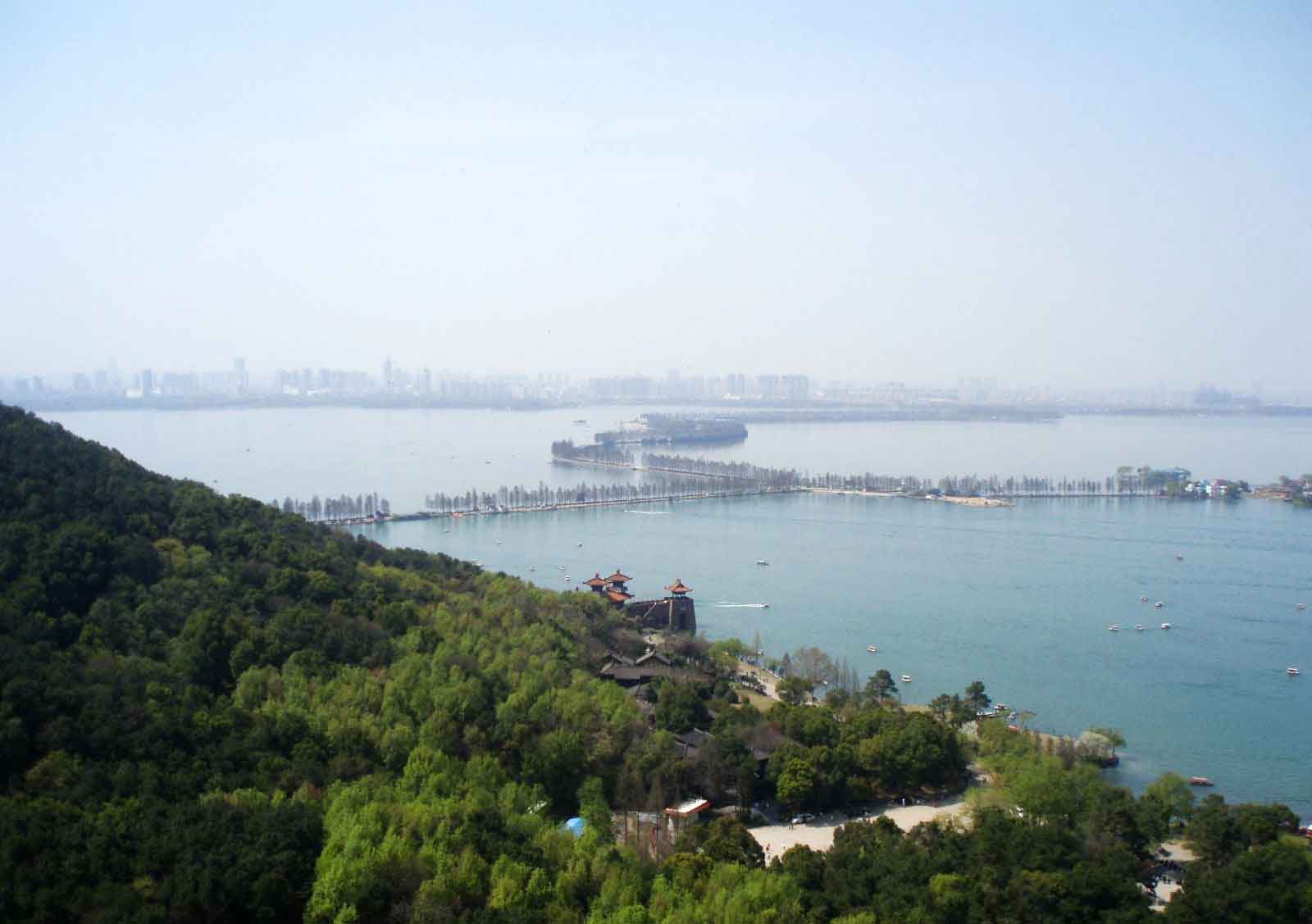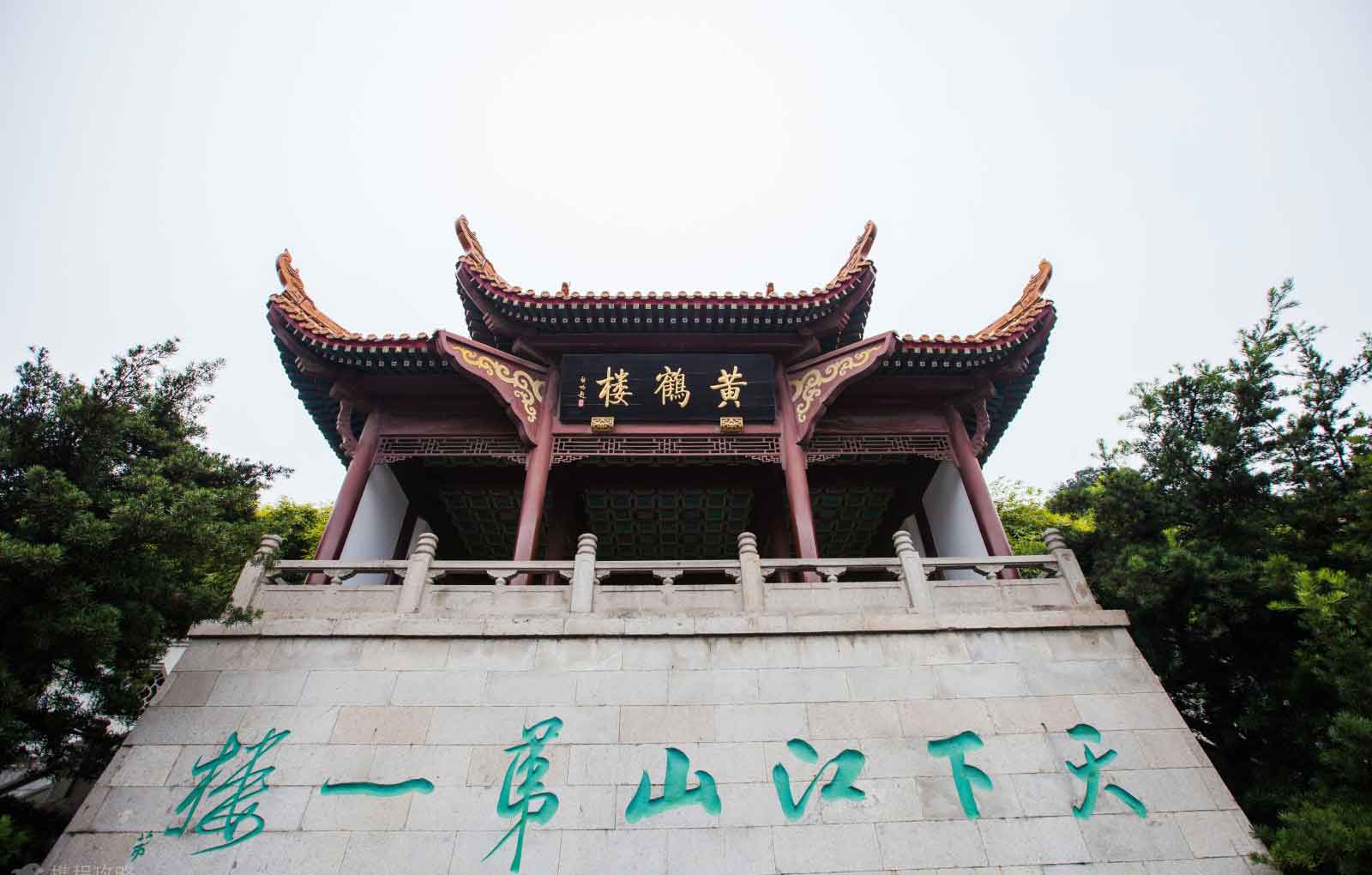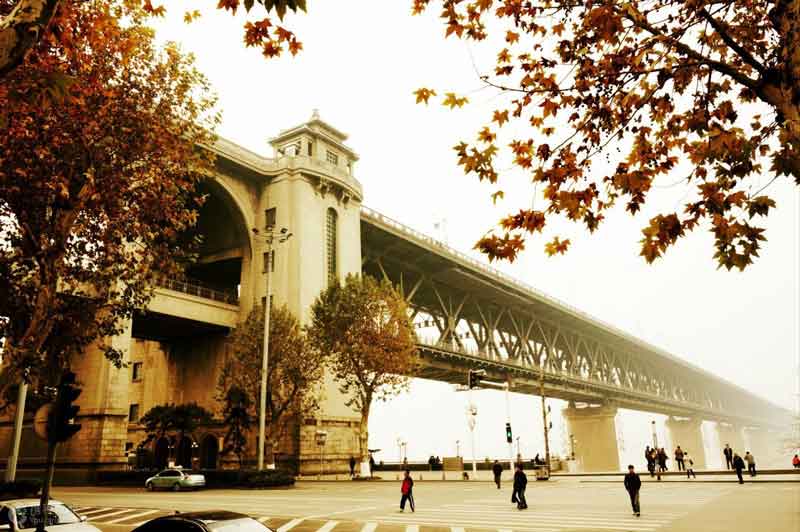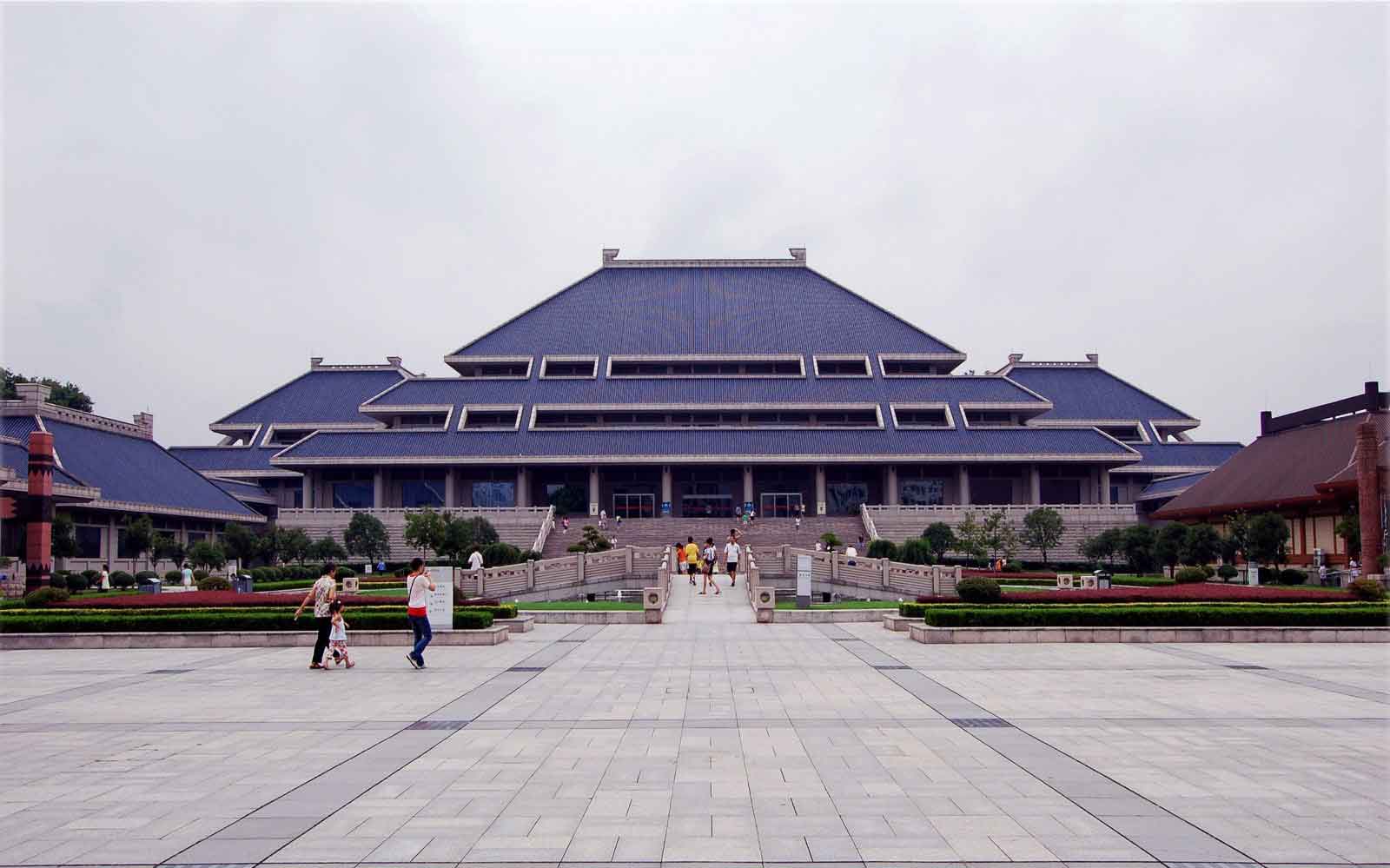East Lake
 East Lake Scenic Area is in the east of Wuhan City, which is the largest lake of China with an area of 87 square kilometers. It was listed among the first batch national key scenic resorts by the State Council in 1992. The East Lake features strong charm of ancient Chu Culture. It was lined with bending banks, with continuous mountains on the southern bank as well as hills on the east and west banks. The north bank is flat. According to different natural environments, the scenic area can be divided into 6 parts, namely listen to rotes, Mill Hill, fallen wild goose, white horse, piping, and Luohong, among which scenic spots in the listen to rotes area are near each other.
East Lake Scenic Area is in the east of Wuhan City, which is the largest lake of China with an area of 87 square kilometers. It was listed among the first batch national key scenic resorts by the State Council in 1992. The East Lake features strong charm of ancient Chu Culture. It was lined with bending banks, with continuous mountains on the southern bank as well as hills on the east and west banks. The north bank is flat. According to different natural environments, the scenic area can be divided into 6 parts, namely listen to rotes, Mill Hill, fallen wild goose, white horse, piping, and Luohong, among which scenic spots in the listen to rotes area are near each other.
Walking through the Huangliwan Gate of the East Lake, one will find the listen to rotes area. With weeping willows along the lake, this area, surrounded by stretching mountains, has a lotus pond. One can also find a number of yachts berthed along the bank. Main scenic spots and constructions in this area include the Xingyin Pavilion, the Changtian Building, Jiunudun Monument, and the Huguang Pavilion.The Xingyin Pavilion was built to commemorate patriotic poet Qu Yuan. Built on a mid-lake island between Lotus Wind and Fallen Feather bridges, the three-storeyed pavilion features a traditional national architectural style, with green tiles and round columns.
The Yellow Crane Tower
 The Yellow Crane Tower is situated in Sanke Hill, Wuchang, famed as “the three famous towers” together with Teng Wang Tower. Its cultural significance led to its being made the symbol of Wuhan City. Naturally, it has become a popular turist attraction.
The Yellow Crane Tower is situated in Sanke Hill, Wuchang, famed as “the three famous towers” together with Teng Wang Tower. Its cultural significance led to its being made the symbol of Wuhan City. Naturally, it has become a popular turist attraction.
The name of the tower was rooted in a legend. It was said that there used to be a wine shop opened by a young man named Xin. A Taoist priest wanted to thank Mrs.Xin for her favour of free wines of thousand cups, so he drew a magic crane on the wall and instructed it to dance whenever it heard clapping. Mrs. Xin became rich. After 10 years, the Taoist priest revisited the wine shop. He played the flute and then rode on the crane to fly up to the sky. Therefore Mrs.Xin built a tower named Yellow Crane Tower. The tower inspired many ancient poets and artists. There were around 300 poems about the tower handed down through the history. In fact, the tower has been a long history of more that 1,700 years, originally built in the Three Kingdoms Period (220-280) by Su Quan (182-252, King of Wu) as a watchtower for his army. Untile recently, the tower has been destroyed and rebuilt, again and again for severy times. The Yellow Crane Tower which stands today is based on the one designed during the Qing Dynasty. It stands 51.4 meters high and has five floors. The roof is covered by 100,000 yellow glazed tiles. With yellow upturned eaves, each floor seems to have been designed to resemble a yelow crane spreading its wings to fly.
The main building is divided into five floors. The first floor is about legend. On the wall, there is a nine-meter long and six-meter wide painted porcelain picture which depicts clouds, rivers and cranes to represent a romantic mood in the heaven. The third floor mainly shows poems written to praise the tower in different dynasties. On top of the tower, visitors are treated to a fabulous panoramic view of the Yangtze River, its bridge and the surrounding buildings in Wuhan City. Outside the tower, there are bronze yellow cranes, memorial gateways and pavilions.
Yangtze River Bridge
 Constructed in 1955, the Wuhan Yangtze River Bridge was the first road and rail bridges to span this mighty river. It was opened to traffic October 13, 1957.The whole bridge is 1670 meters long. The main bridge is 1156 meters long. The bridge approach in the north end is 303 meters long. The bridge approach in the south end is 211 meters long. It's 80 meters high from the fundus to the surface of the highway bridge. The auxiliary buildings and all kinds of decorations are very compatible with the whole bridge. The whole bridge looks extremely magnificent. People can take the lift from the ground floor directly to arrive at the road surface of the highway bridge. When people stand on the bridge and Look into the distance, they will find that the three towns of Wuhan combine into one whole. It makes people full of imagination. "One bridge is built spanning the river, which makes the traffic convenient." Wuhan Changjiang River Bridge not only unites the three towns of Wuhan into one body, but also greatly promotes the development of industry and agriculture.
Constructed in 1955, the Wuhan Yangtze River Bridge was the first road and rail bridges to span this mighty river. It was opened to traffic October 13, 1957.The whole bridge is 1670 meters long. The main bridge is 1156 meters long. The bridge approach in the north end is 303 meters long. The bridge approach in the south end is 211 meters long. It's 80 meters high from the fundus to the surface of the highway bridge. The auxiliary buildings and all kinds of decorations are very compatible with the whole bridge. The whole bridge looks extremely magnificent. People can take the lift from the ground floor directly to arrive at the road surface of the highway bridge. When people stand on the bridge and Look into the distance, they will find that the three towns of Wuhan combine into one whole. It makes people full of imagination. "One bridge is built spanning the river, which makes the traffic convenient." Wuhan Changjiang River Bridge not only unites the three towns of Wuhan into one body, but also greatly promotes the development of industry and agriculture.
Guiyuan Buddhist Temple
 The word “Guiyuan” orinates from a sutra, meaning to surpass the circumscription of existence and extinguishment, to return to purity and tranquility. Covering an area of about 46,900 square meters, Guiyuan Buddhist Temple is in a garden style, it is made up of five courtyards: the eastern courtyard, the western courtyard, the southern courtyard, the northern courtyard, and the middle courtyard.
The word “Guiyuan” orinates from a sutra, meaning to surpass the circumscription of existence and extinguishment, to return to purity and tranquility. Covering an area of about 46,900 square meters, Guiyuan Buddhist Temple is in a garden style, it is made up of five courtyards: the eastern courtyard, the western courtyard, the southern courtyard, the northern courtyard, and the middle courtyard.
Guiyuan Temple is well known for its grand architecture, Buddhist scriptures, The statues of Weito (the temple guardian) carved of oak, especially the 500 Lohans in the southern courtyard. They were vivd and lively just like real people. They are all identical in size, and each is no more than 25 kilogram's in weight. What is most amazing is that one can never find two Lohans with the same appearance or expression. They are all totally different from each other. Counting Lohans in the courtyard forms an interesting custom in Wuhan. It is said that one can know the disasters and fortunes in the present year by counting the Lohans. The Guiyuan Temple is very famous in the Buddhist world owning to perfect construction, spiffyculpture and abundant collection. A large number of people including our compatriots in Hong Kong, Macao and Taiwan and those residing abroad, as well as many foreign tourists including some important persons in the politics of all countries such as Sihanouk, King of Cambodia, Kissinger, United States Secretary of State, Li Guangyao, former prime minister of Singapore, Yasuhiro Nakasone, Prime Minister of Japan and some other famous persons have successively been here to visit it. They presented gifts to the temple separately.
Hubei Provincial Museum
 Hubei Provincial Museum is one of the best-known museums in China, with a large amount of State-level historic and cultural relics. The museum is located in the Wuchang District of Wuhan, Hubei Province, not far from the west shore of Wuhan's East Lake. The Hubei Provincial Museum, established in 1953, contains the most important collections of artifacts in the province. Among all its exhibits, the most prominent are its abundant unearthed relics, including stone ware, pottery, bronze, and lacquer ware. A large number of heritages of the Qujialing Culture and the Warring States Period (475-221BC) are the most precious, for instance, the sword of King Goujian of the Yue State unearthed in Jiangling, and Zeng Houyi Bells excavated in Sui County, all renowned both at home and abroad.
Hubei Provincial Museum is one of the best-known museums in China, with a large amount of State-level historic and cultural relics. The museum is located in the Wuchang District of Wuhan, Hubei Province, not far from the west shore of Wuhan's East Lake. The Hubei Provincial Museum, established in 1953, contains the most important collections of artifacts in the province. Among all its exhibits, the most prominent are its abundant unearthed relics, including stone ware, pottery, bronze, and lacquer ware. A large number of heritages of the Qujialing Culture and the Warring States Period (475-221BC) are the most precious, for instance, the sword of King Goujian of the Yue State unearthed in Jiangling, and Zeng Houyi Bells excavated in Sui County, all renowned both at home and abroad.

